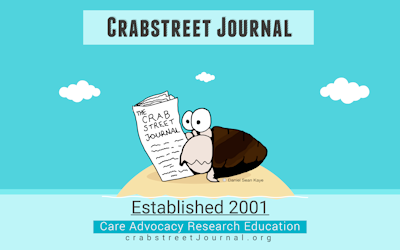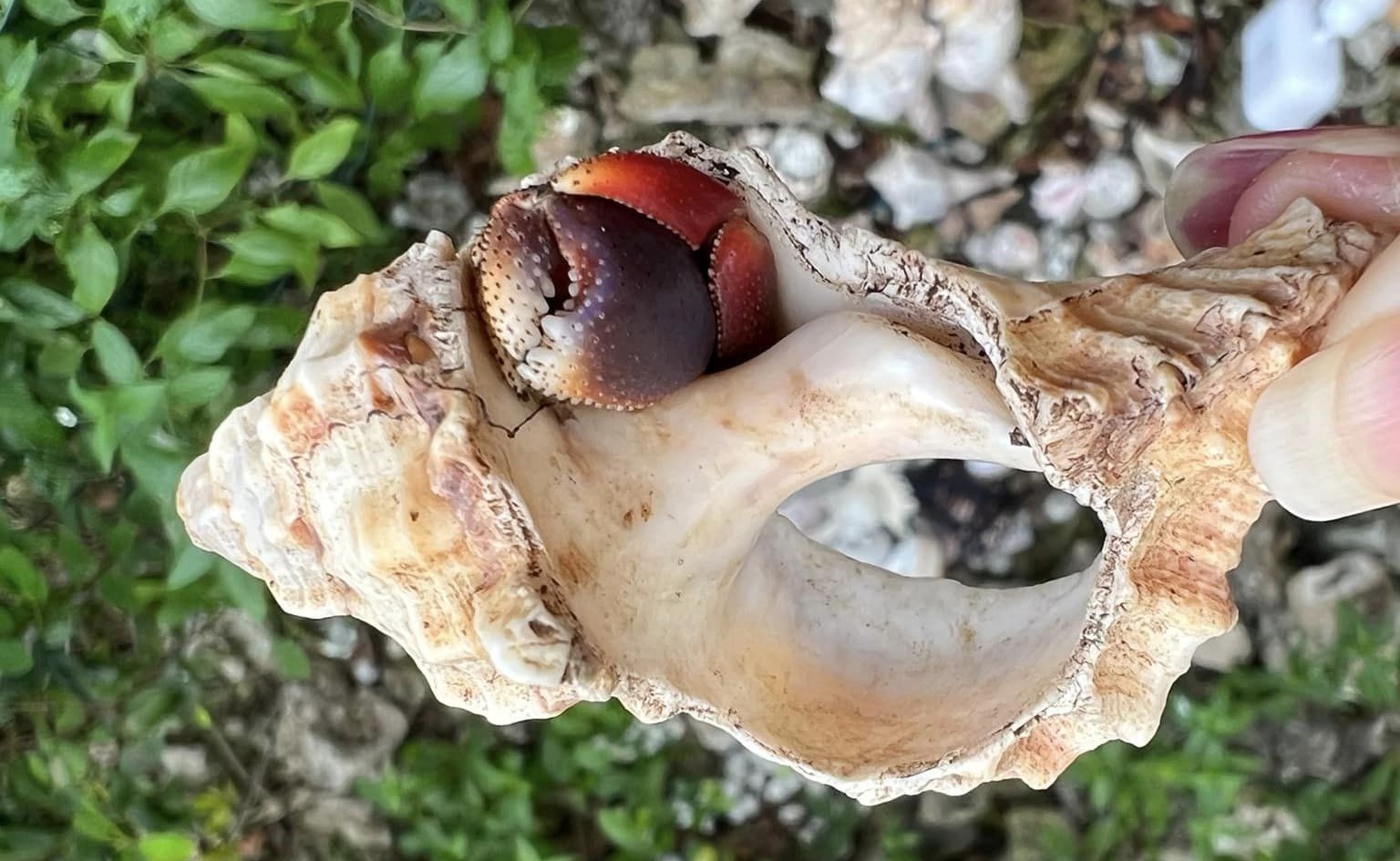
Article reprinted here with exclusive permission to Marie (ladybug15057) for use on the Crab Street Journal and, by author’s stipulations, may not be reprinted elsewhere. You are always welcome to link to this article.
There is a newer product on the market called Crayola play sand. It comes in 4 vibrant colors pink, purple, green and blue which means some form of coloring additive is used. From past research I have done, I had learned that just because it is FDA, OHSA, EPA, etc. approved or within their standards, or considered safe for children does this necessarily mean it is safe for one to put within the crabitat where our hermit crabs live their whole lives while living in captivity with us.
FDA, EPA, and OSHA (as well as others) do permit for a percentage of known harmful ingredients to be within a product before it requires it to be labeled as dangerous or poisonous, or before it is pulled off of the shelves where they are sold. With majority of the studies that are done, it is normally regarding studies on humans, and even then many times the results are not considered conclusive, especially the long term effects.
When I began researching I came across a forum that claimed that the Crayola play sand also had an antifungal agent within it.
I had gone to Crayola’s web site and found it does state that products containing lead must be labeled as such per California Proposition 65. It does not state that there is not lead in the Crayola products, only that they must have on the label that the lead content complies with FDA regulations.
Doing a Google search shows that even with all the known health issues with lead, a certain percentage of lead is acceptable in products sold in the U.S. This includes and not limited to candy children often eat, as well as in the wrappers it is wrapped in, water we drink, foods we eat, etc. Household and public water pipes, or the soder used to connect these pipes was banned by EPA in June 1988. This means that many older households, building structures, as well as public water suppliers who have not replaced all the water pipes still contain lead in the pipes and soder that was used.
Regardless of whether it is FDA, OSHA, EPA, etc. a certain amount of impurities are permissible in all products on the market and will pass inspection by their standards of considered safe toxicity levels when tested.
I had made a telephone call directly to Crayola, and spoke with Chris. She in turn mentioned that the toll free telephone number that was listed on Crayola’s web site was for sales, and referred me to their licensing partner play sand manufacturer N2M in Texas for the information I was seeking. When I called N2M I had received the receptionist who had taken my name and telephone number and my call was returned.
I had a few questions regarding Crayola play sand written down in preparation for some of the concerns I had.
One was the coating that was used on the play sand. It explained that the coating on the Crayola play sand I had read about was an acrylic coating that was approved by Arts and Creative Materials Institute and used for arts and crafts. The acrylic colorant used to color the quartz sand was an ACMI approved colorant and used for arts and crafts. I mentioned I had read on the internet the play sand had an antifungal deterrent used on it, and she stated there was and it too was approved by the Arts and Creative Materials Institute guidelines and was also used in arts and crafts materials. The N2M Group Administrator had mentioned that through human studies it was recommended to use a sun screen on younger children prior to exposing them to the Crayola play sand due to how sensitive their skin is and the possibility of absorbing anything from the play sand and to help stop the possible irritation of their skin. With this in mind, I thought of how soft a hermies abdomen is, as well as how gel like they are when they molt and what, if any, effects it would have on a hermit crab.
This led me to ask if any studies had been done on hermit crabs and the Administrator stated that due to Animal right laws, PETA, and other Animal rights organizations their company was not licensed to do any testing on animals be it cat, dog, hermit crab, fish, etc.
I mentioned that searching the Crayola play sand I was unable to locate a MSDS sheet on this product. The Group Administrator had taken my e-mail address and e-mailed me both the MSDS as well as the letter from Duke University School of Medicine giving me permission to use them. It was explained to me that the information was copyrighted as with all the information on Crayola’s web site. I explained to the Group Administrator that I was one of the Site Administrators of the Crab Street Journal and wanted to share the information with all the staff and its members. I was given permission to use the MSDS as well as the letter from Duke University in my article, but I also had to make a note that it is copyrighted and without authorization of its use it fell under the Crayola’s copyright law.
http://www.crayolastore.com/cc_legalnotice.asp
Once I received them, I decided to research even further. From the research, I would strongly recommend to err on the side of caution where it comes to hermit crabs and not use this as a substrate within a crabitat.
Researching what ACMI’s guidelines were for arts and crafts acrylic colorants and acrylic coatings, I came across that they follow the FDA and OSHA guidelines for safe levels of any products sold in the U.S.
Arts and Crafts acrylic paint ingredients are 1, 2-Ethanediol (5-10%), Kaolin (1-5%), Titanium Oxide (20-30%), 2-Propenoic Acid, Butyl Ester, Polymer with ethenyl acetate (20-30%), Propanoic acid, 2- Methyl, Monoester with 2, 2, 4 Trimethyl, 1, 3 pentanediol (1-5%), Water (40-50%)
Formaldehyde is used as a preservative in many acrylic paints and photographic products.
At these percentages for the arts and crafts acrylic paint ingredients it is considered safe by OSHA and FDA. Yet there is an area as well for emergency and first aid procedures for inhaling of this acrylic paint, skin contact as well as if it is ingested. “Ingestion: If swallowed, give two glasses of water to drink. Consult a physician.” Please remember, these emergency and first aid procedures are for humans, not hermit crabs who may end up eating the play sand daily with the above ingredients, as well as living on or burrowed under this play sand.
Arts and crafts acrylic coatings ingredients are:
P-Tert-Butylphenol, Hydrous Magnesium silicate, M-Xylene-Alpha, Alpha Diamine, Trimethylhexamethylenediamine, Phenol, Formaldehyde Amine Polymer, 4- Nonyl Phenol..Branched, Polyamide.
The arts and crafts acrylic coating is also considered to be at safe levels by the OSHA and FDA for humans. But also has warnings about this acrylic coating that it may cause chemical eye or skin burns, may cause allergic skin or respiratory reactions, as well as it maybe absorbed through the skin and possibly target organ effects.
Again, Please remember, these emergency and first aid procedures are for humans, not hermit crabs who may end up eating the play sand daily with the above ingredients, as well as living on or burrowed under this play sand.
References:
Green Options
Green Living Magazine
SAFE SUBSTITUTES –
NON-TOXIC HOUSEHOLD PRODUCTS
Written by: Gary A. Davis and Em Turner, University of Tennessee – Knoxville Waste Management Institute
ASTDR Department of Health and Human Services
U.S. Department of Health and Human Services HHS
The Crayola Store
MSDS-Arts and crafts acrylic paint



